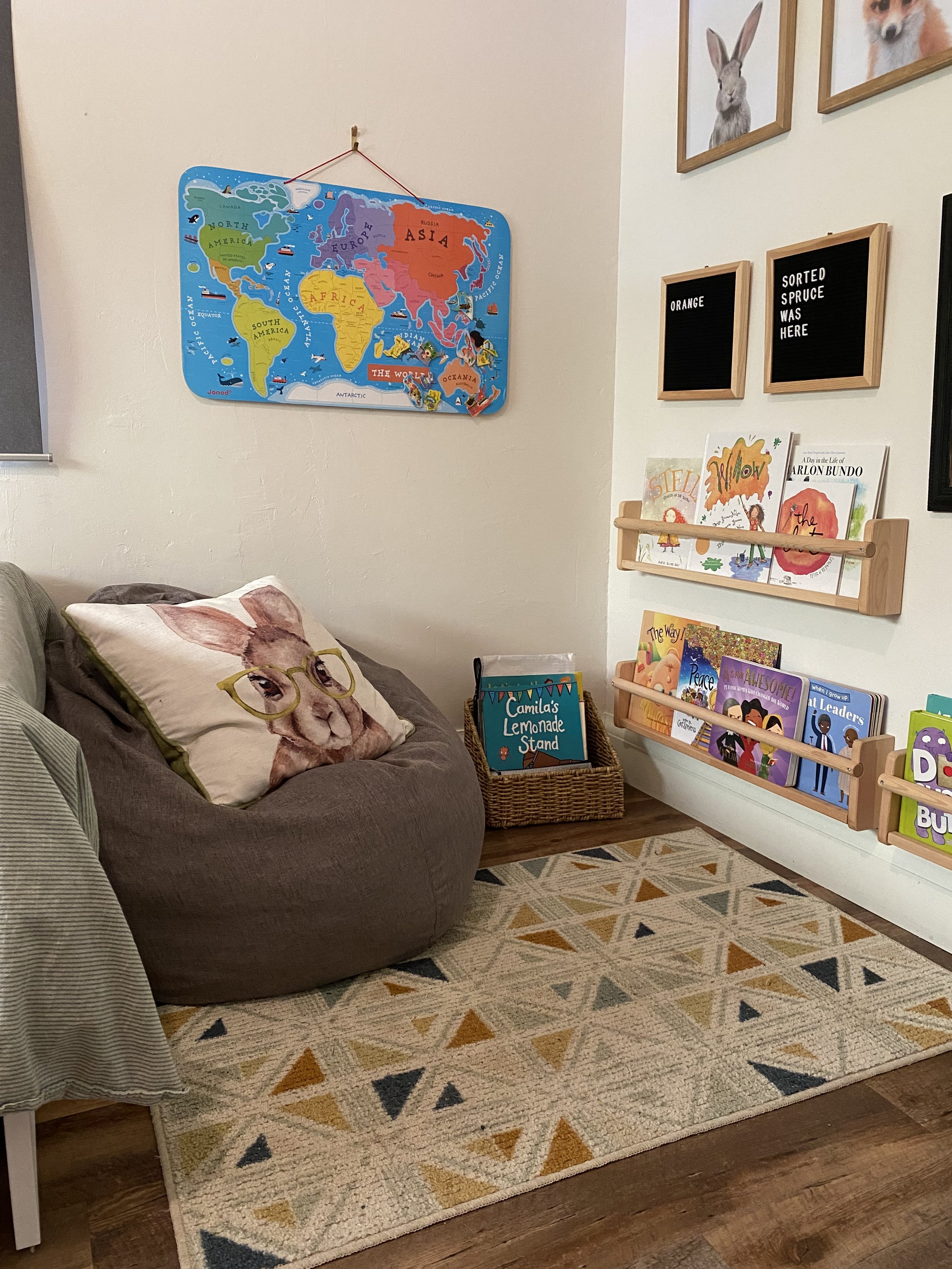Home Organizing Explained: Backstock
In retail, backstock refers to unsold product. Often we think of this as the extra inventory stored in the warehouse portion of the store that is used to restock the shelves the customers shop from. This keep these customer facing areas uncluttered, while still being able to account for inventory and avoid overstock. Professional Organizers use this concept to create organizing systems in homes. In this blog, I’m sharing a few examples of backstock systems; how to set them up and maintain them, as well as some tips to avoid a slippery slope of backstock overstock.
Examples of Backstock
Bulk Snacks: Many households shop in bulk with the goal of saving time (less frequent shopping) and money (bulk pricing). However this can result in overflowing cabinets and drawers, or cluttered countertops while everyone works through the supply. This can be avoided by setting up some snack bins to store a reasonable amount of snacks in an easy to reach place, and create a backstock area for the rest of the snacks. You can take the bin to your backstock area to refill as needed. Once the backstock runs out, the snack item can be added to your grocery list.
Decanted Spices: Matching spice jars with labels makes for a Pinterest worthy photo. However, this swoon worthy look leaves you with leftover spices in their original packaging that didn’t fit in the matching jars. These should all be stored in a backstock bin, so you can bring the bin to your decanted spices and refill the matching jars as needed. Similarly to the bulk snacks, once the backstock spices run out, you can add it to your grocery list.
Frozen Food: Freezing food is a great way to extend its shelf life. If you have a secondary freezer, like a deep freezer, that is backstock. Like the bulk snacks, you may want to keep a reasonable amount of individually packaged items (like popsicles) in your main freezer and restock from your backstock. Like the decanted spices, you may want to keep a freezer safe container with a small portion of the food (like frozen corn) in your main freezer, with the rest of the package in the back stock freezer.
Ziplock bags: I wanted to make sure to include a non-perishable item in my examples, and ziplocks are perfect because they are often sold in multi packs. Keeping one of each size in your kitchen, with the rest in a backstock area with similar items like paper towel and Kleenex, make it easy to shop your backstock as needed.
Children’s Toy/Book Rotations: Choosing to rotating children’s toys, is also a different spin on the backstock system.
The Slippery Slope of Backstock
Not everything deserves a backstock. Here are some things to consider when setting up backstock areas in your home:
Backstock is best for frequently used items that you will inherently refill. If you buy a specialty item, it might be worth keep all of it in your primary location to avoid forgetting more exists.
Backstock needs to be monitored for expiry dates. When restocking, it’s a good idea to have a quick look and see what might need to go on the menu sooner than later. If you aren’t getting to it in time, it’s worth reconsidering if buying in bulk is necessary.
Backstock items should all be accessible. Dont trade a clutter free kitchen for a cluttered backstock area. Take the same care into setting up the backstock by removing excess packaging, keeping the earliest expiration dates to the front, and categorizing the items.
If you need help setting up backstock systems in your home, contact Sorted Spruce Organizing Solutions.





